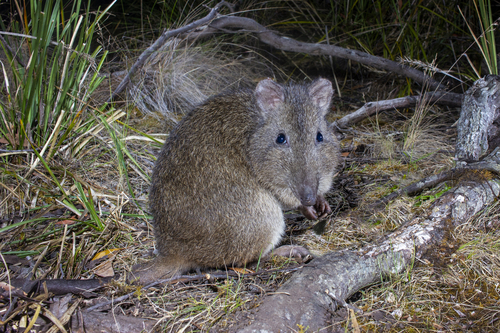
Long-nosed Potoroo
The Long-nosed Potoroo, with its distinctive pointed snout and agile hops, thrives in southeastern Australia’s forests. Active at night, it plays a crucial role in seed dispersal, supporting forest renewal. Its unique foraging behavior and ecological contribution make it a fascinating marsupial.
5-7 years
Lifespan
Length: 30 - 41 cm
Size
Brown, Grey, White
Color
1 year
Age of Sexual Maturity
5.5 months
Age of Weaning
Near Threatened
Conservation Status
Decreasing
Population Trend
Characteristics
The Long-nosed Potoroo (Potorous tridactylus) is a small marsupial found in the southeastern forests of Australia. It has a pointed snout, grey-brown fur, and long hind legs adapted for hopping. This nocturnal creature is known for its role as a seed disperser, aiding forest regeneration.
Distribution Range of the Long-nosed Potoroo
Potorous tridactylus, commonly known as the Long-nosed Potoroo, is native to southeastern Australia. This includes regions in New South Wales, Victoria, Tasmania, and some parts of South Australia.
Long-nosed Potoroo's Habitat
Environmental Conditions
The Long-nosed Potoroo typically inhabits coastal heathlands, wet and dry forests, and woodlands. These areas are characterized by dense understorey vegetation, which provides cover and food resources. The climate in these regions varies from temperate to cool temperate, with moderate rainfall supporting lush vegetation.
Ecological Niche
Potorous tridactylus plays a significant role in its ecosystem as a mycophagist, primarily feeding on fungi, which helps in the dispersal of fungal spores. This is crucial for nutrient cycling and maintaining the health of forest ecosystems. The species is adapted to a life of foraging on the forest floor, often in areas with dense ground cover for protection against predators.
Copyright @ Nature Style Limited. All Rights Reserved.
 English
English